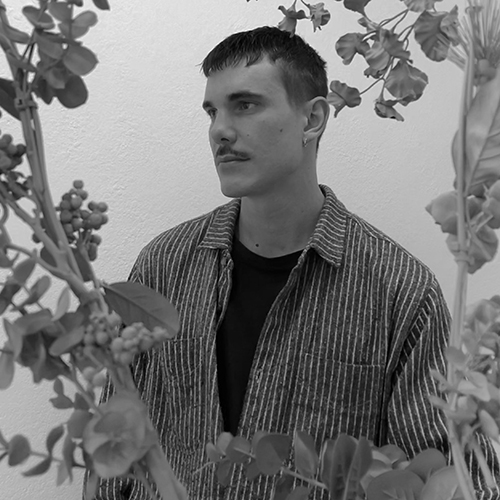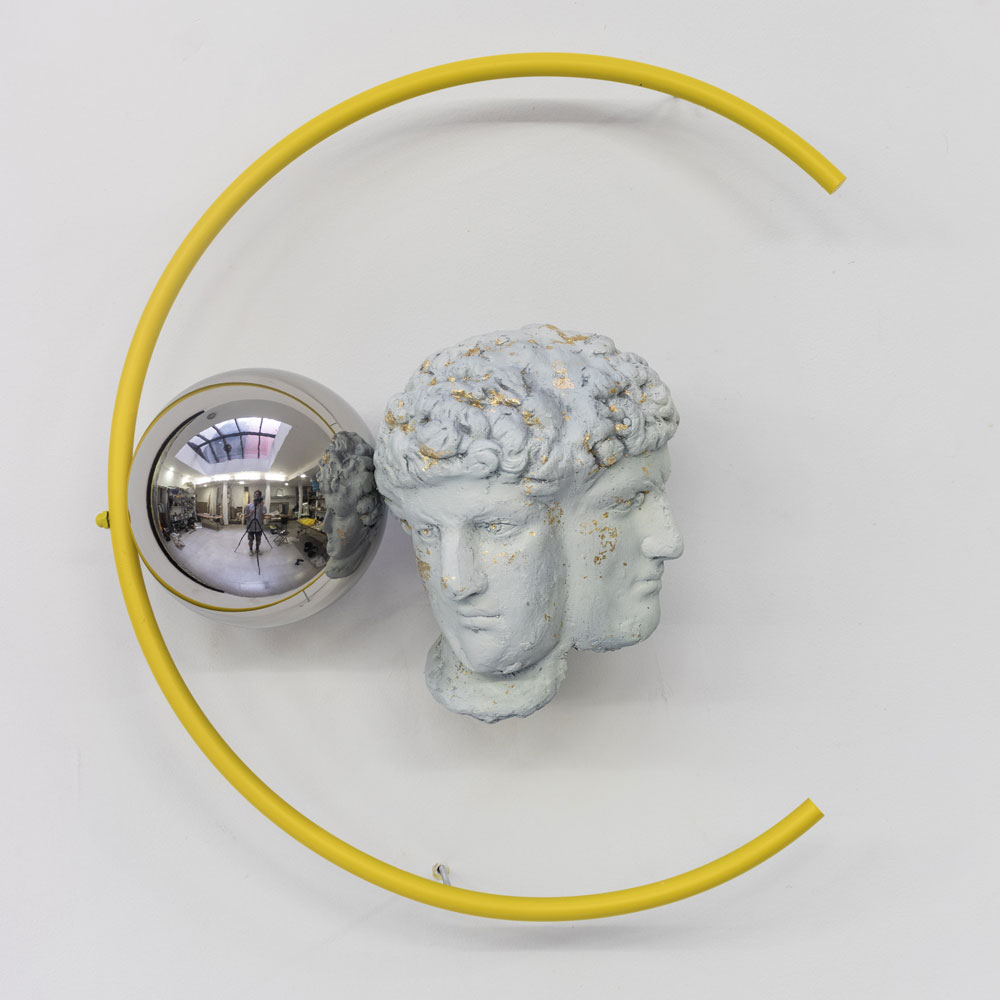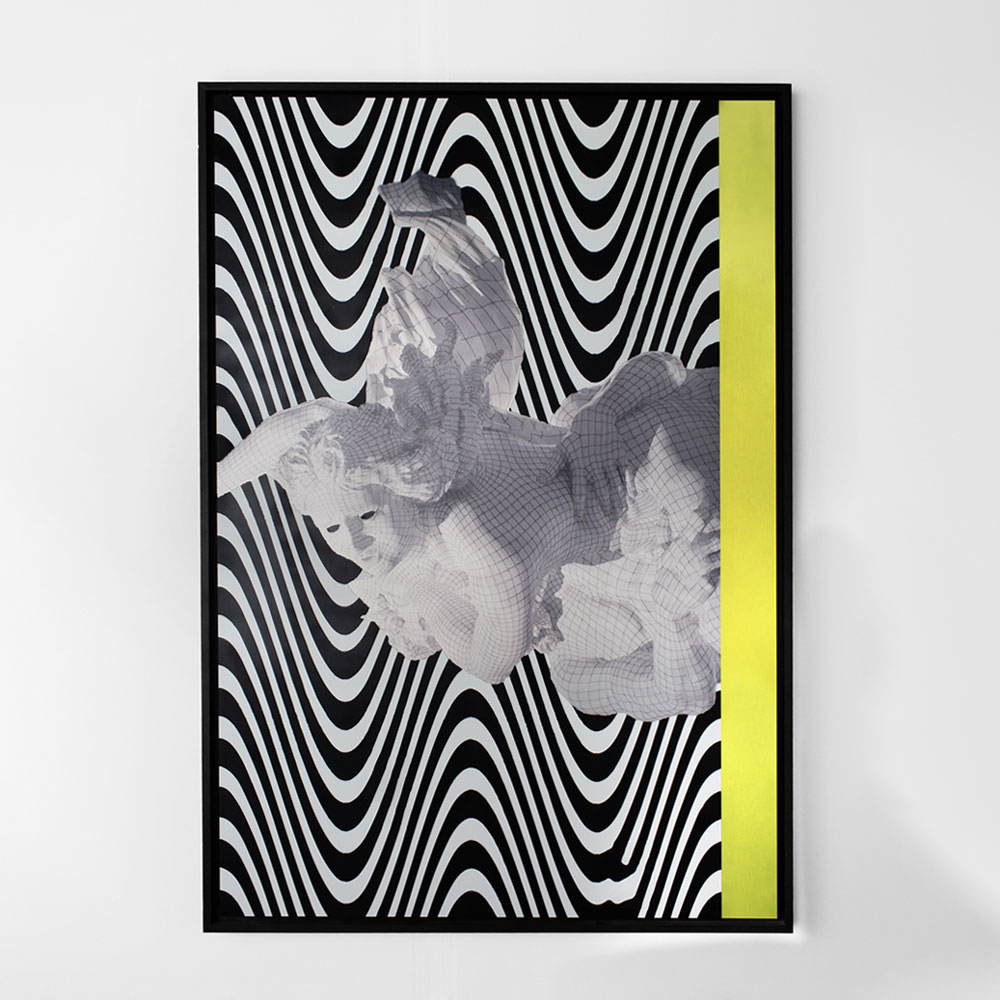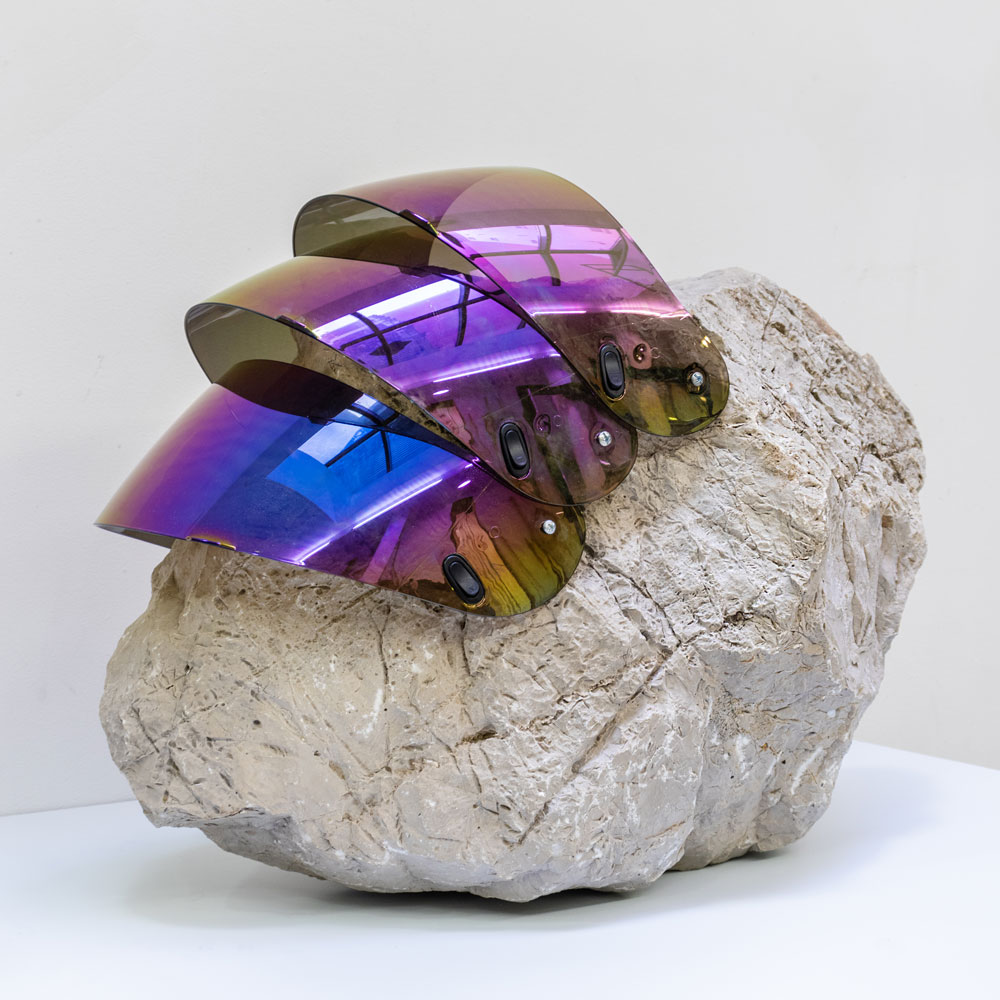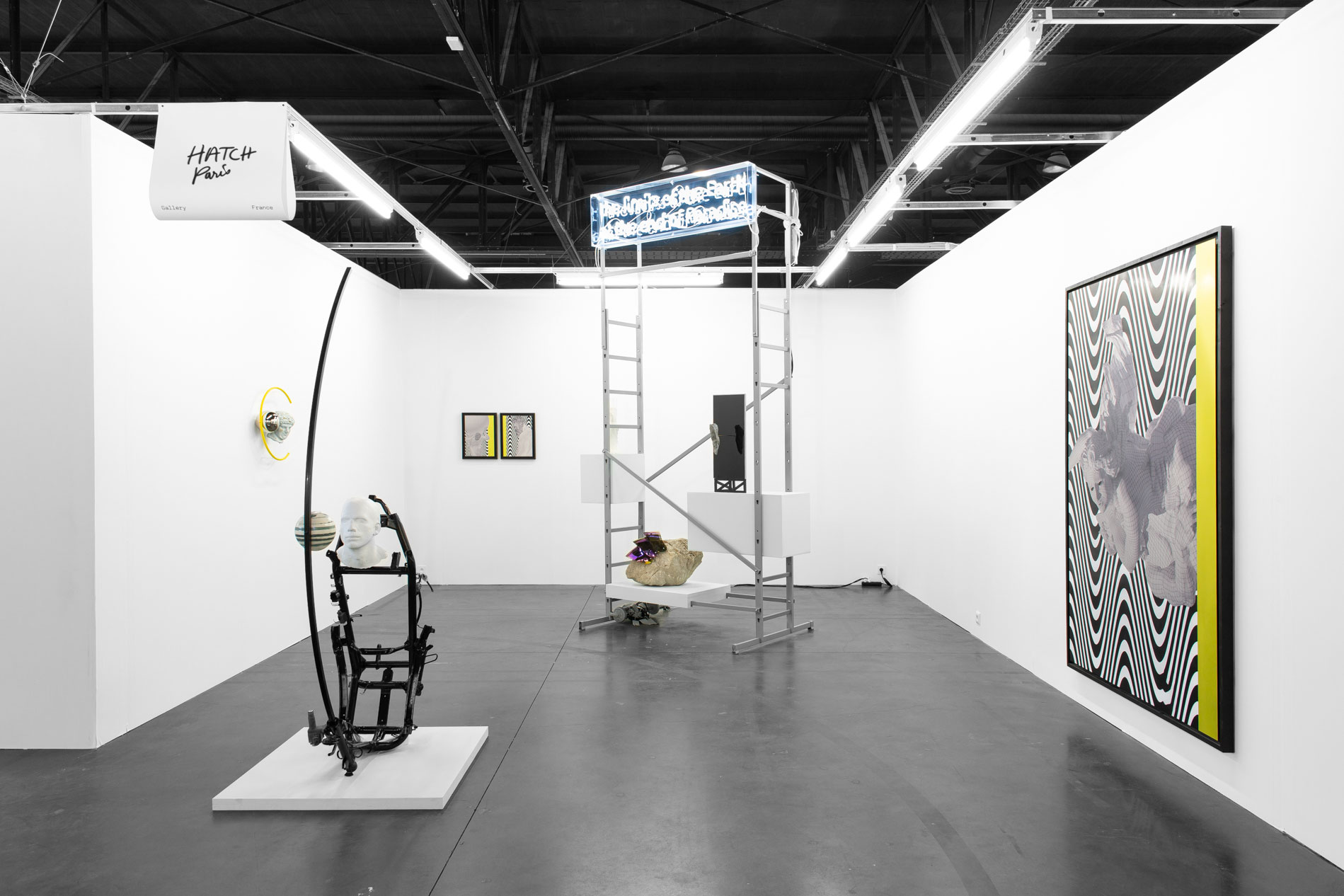
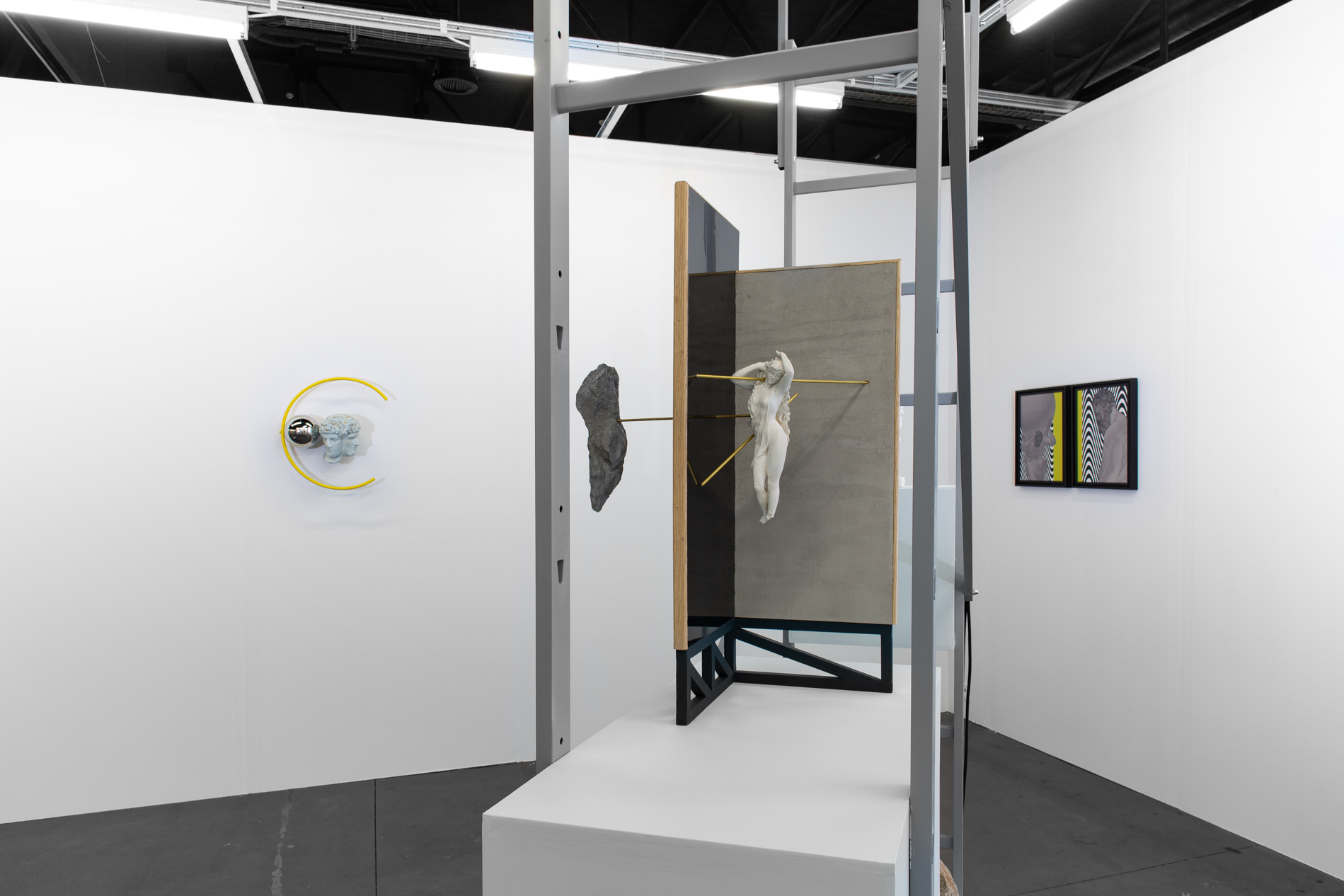
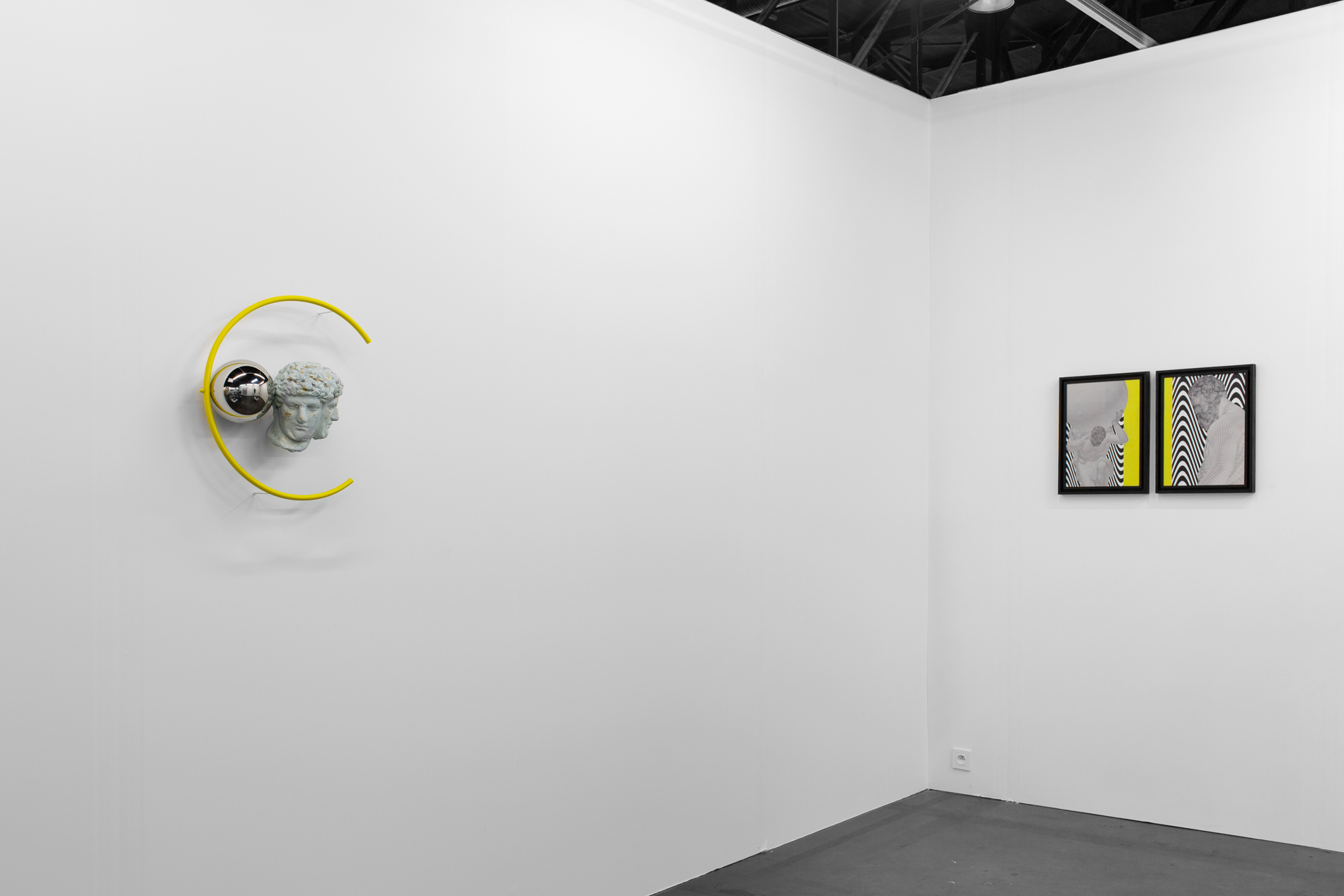
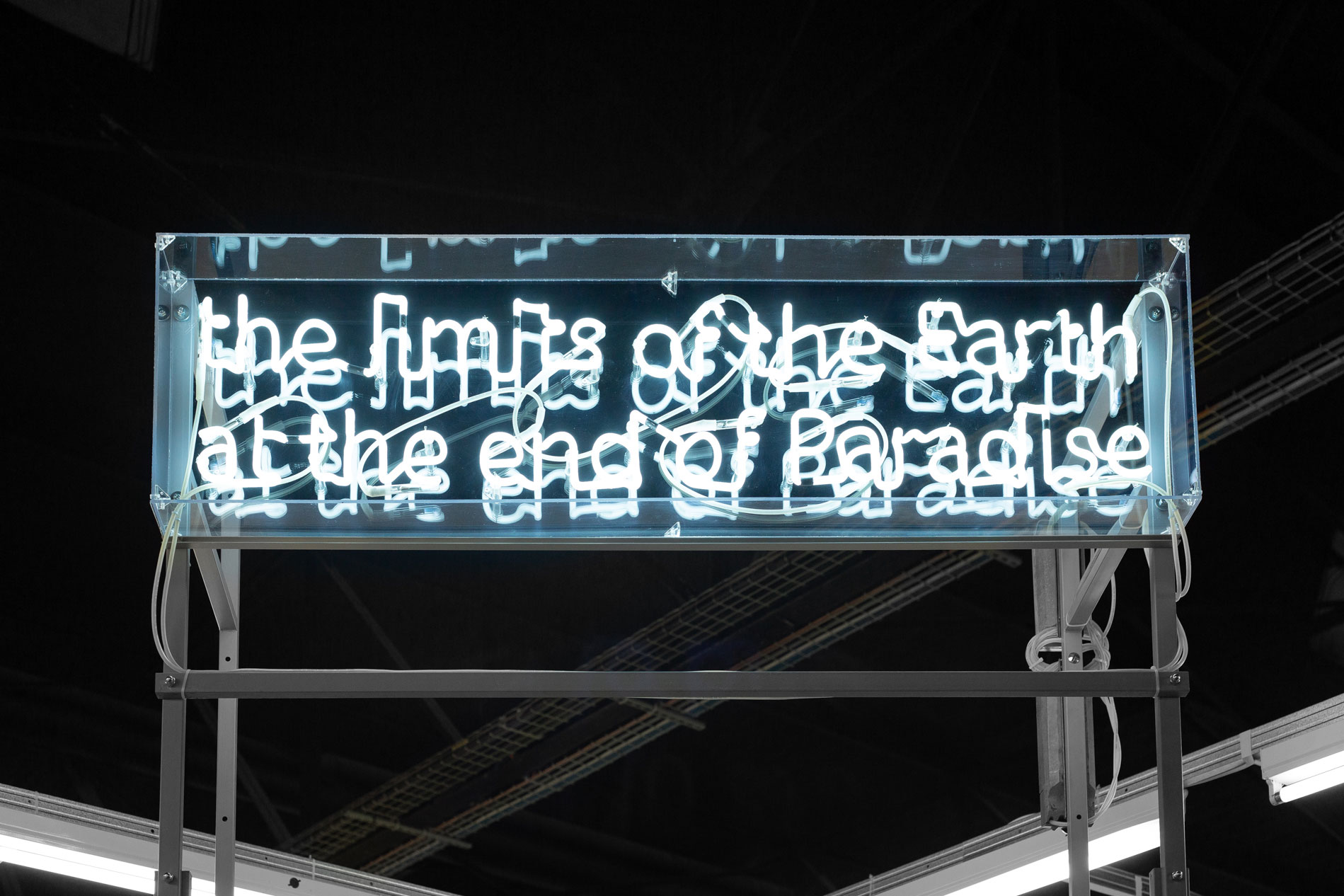
Plein Sud: Your exhibition is entitled Mas/seille: the limits of the Earth, at the end of Paradise. The end of paradise, yes, but why Marseille? Are we to understand that this city embodies the limits, the decadence that will lead us to the end of time?
Léo Fourdrinier: The works in the exhibition were specially conceived for the ART-O-RAMA fair. I drew on the multicultural origins of the city of Marseille to construct my narrative, drawing inspiration from history and mythology. It's a fitting tribute to Marseille and its founding myths, drawn from the ancient civilizations of the Mediterranean basin. The title is a contraction of the city's ancient name "Massalia" and "Marseille". This dual temporality is symbolized by the Roman god "Janus", with two faces, looking to the past and the future. This god, the city's historical symbol, would - according to the ancient Romans - find his place at the "limits of Earth and Paradise". The title of the exhibition illustrates this belonging to the world of mortals and the divine. It's a hopeful reconciliation.
PS: You unfold a scenario of objects that borrows as much from ancient myths as from futuristic references. Why did you choose to combine these two extremes?
LF: Ancient myths unfold in history as archetypes, and tell us the stories of humanity. My works are a blend of heritage and a look at the elements of contemporary daily life, such as Marseille, which is at the crossroads of the Roman past with its myths and beliefs, its limestone geology and the motorized noise of its industrial present. Combining these temporalities makes us aware of the multiple links that connect us and bring us together.
PS: What is your relationship with Marseille? Do you live or work there?
LF: No, I'm originally from Nîmes and I've been setting up my workshop at the Port Des Créateurs, a cultural third-location center in Toulon, for the past three years. Julien Carbone and his team support me in my understanding of the area, and in my exchanges with the various cultural players. The ecosystem created by this venue, and by others in France, is essential for supporting young creators, and for the cultural and collective influence of the region. As a result, I've developed a deep interest in the dynamics of the Provence-Alpes-Côte d'Azur region.
PS: How long have you been working with HATCH? Where is this gallery based?
LF: I met Margot De Rochebouët and Giovanna Traversa, co-founders of the Parisian gallery HATCH, over a year ago when they invited me to take part in their group show "Garage Band", a lively and atypical show in an industrial wasteland in the 18th arrondissement of Paris. Their no-holds-barred, meticulous programming coincided with the multiple inspirations of my work, and we chose to collaborate together for my first presentation at ART-O-RAMA, which we felt aligned with my artistic development. This collective project was accompanied by curator Joséphine Dupuy Chavanat, whom I met at the last Bourse Révélations Émerige, who carried out a formidable archaeological and critical investigation.
PS: Your work deals with the assembly and telescoping of eras and materials. What are you trying to achieve by playing with the laws of physics and the balance of things?
LF: My sources of inspiration are manifold, leading me to collaborate with scientists such as my astrophysicist friend Arthur le Saux, with whom I regularly discuss his research into the workings of the stars. The understanding of the elements that make up our world and the universe, beyond a strong poetic dimension, is a universal dynamic that brings together knowledge and temporalities.
PS: How would you describe the temporality of your universe?
LF: Rather than a temporality, it would be a movement: the union of heritage and the fantasy of the future.
PS: You transport us into an imaginary world where objects seem to have found a kind of eternity. Does reality necessarily lead to a fall?
LF: This desire for eternity is wonderfully expressed by the writer and poet Roger Caillois (1913-1978), a great collector of stones, who is a fundamental reference for me: "Man envies them [stones] their duration, hardness, intransigence and brilliance, to be smooth and impenetrable, and whole even when broken." The fascination that stones exert on man reminds him of his impermanence. Reality has no fall, but is a continuum, a cycle that connects beings and things.
PS: Your pieces sometimes seem imbued with a kind of nostalgia. Do we need to call on the past to heighten our awareness of the world and build a better future?
LF: The impression of nostalgia must surely stem from the ancient imagery I conjure up, to which we associate the notion of ruin or extinct civilization. But this is not the case: as Joséphine Dupuy Chavanat points out in her exhibition text, my work is "to be read as a thought desiring a future to be erected collectively. A future that must be envisaged in synergy with nature, but also with the industrial, the digital and the mineral". The past and history play a vital role in our understanding of the present and our future actions.
PS: You were present at Châteauvert this summer, can you tell us about your intervention?
LF: Lydie Marchi and her team invited me to take part in the "Eté Culturel - Rouvrir le monde" program organized by the French Ministry of Culture and the DRAC Paca. The residency included a sculptural creation workshop with teenagers at the Phoenix day hospital in Brignoles, and a period of research and creation to develop my practice at the Châteauvert Contemporary Art Center. My work with the teenagers was a unique experience of sharing and transmission: accompanied by the nurses, we created a collective sculpture with them, which was installed in the hospital grounds. Raising public awareness and providing support is a key challenge for the cultural sector, and the art center, which is rightly located in a rural environment, is rising to this challenge with flying colors.
PS: What are your next projects?
I am pleased to invite you to my next solo exhibition "Is this love? Is this love? Is this love? Is this love that I'm feeling?" at the Port des Créateurs in Toulon, opening in December 2023. We'll be talking about love, of course, but also about what builds and deconstructs us in the definition of our identities.
